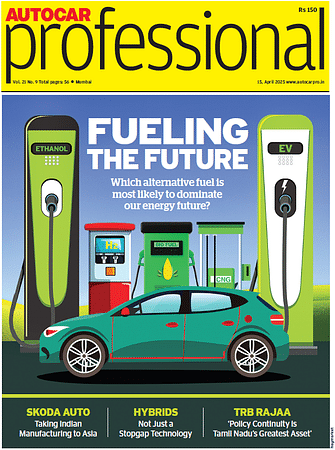Mercedes-Benz B-Class Electric Drive cuts CO2 emissions by 64 percent
The Mercedes-Benz B-Class Electric Drive was awarded the environmental certificate in accordance with ISO standard TR 14062 by TÜV Süd technical inspection authority at Stuttgart.
The Mercedes-Benz B-Class Electric Drive was awarded the environmental certificate in accordance with ISO standard TR 14062 by TÜV Süd technical inspection authority at Stuttgart. The award was presented as the electric-drive Sports Tourer has now lowered its CO2 emissions by 64 percent over its complete lifecycle.
"The fact that we are able to integrate the electric motor and batteries into a perfectly 'normal' B-Class does not only mean that we can assemble the Electric Drive alongside the other B-Class vehicles on one production line, but almost more importantly means that our customers do not have to make any compromises at all in terms of spaciousness, safety or comfort", explained Professor Dr Herbert Kohler, Chief Environmental Officer at Daimler AG. "The B-Class Electric Drive is an important milestone along our journey towards emission-free driving."
Over its entire life cycle, comprising production, use over 160,000 kilometres and recycling, the B-Class Electric Drive model produces emissions of CO2 that are 24 percent (7.2 tonnes – EU electricity mix) or 64 percent (19 tonnes – hydroelectricity) lower than those of the B 180 - despite the higher emissions generated during the production process. This is primarily due to the efficiency of the electric motor, which gives rise to significant advantages during the use phase. The key factor is its energy management system, which further enhances the efficiency of the drive system and enables even greater ranges.
CO2 emissions during the use phase here depend upon the method used to generate electricity. In 160,000 kilometres of driving use, the new B-Class Electric Drive produces 11.9 tonnes of CO2, assuming use of the EU electricity mix. When electricity generated by hydroelectric means is used to power the electric vehicle, the other environmental impacts relating to electricity generation are also almost entirely avoided. The B 180 (NEDC combined consumption 5.4 l/100 km) on the other hand emits 23.8 tonnes of CO2 during the use phase.
RELATED ARTICLES
Hyundai unveils next−gen highly efficient hybrid system
The next-gen hybrid system is claimed to offer 45% better fuel efficiency and 19% more power compared with ICE powertrai...
Horse Powertrain reveals hybrid conversion for electric cars
Engine-making joint venture of Geely and the Renault Group announces new hybrid powertrain that fits into the same space...
Aisin to produce hybrid motor for Mitsubishi in Thailand
The hybrid drive motor and gearbox, will be produced at Aisin Powertrain (Thailand) Co for use in the Mitsubishi XForce ...






 By Autocar Professional Bureau
By Autocar Professional Bureau
 18 Dec 2014
18 Dec 2014
 3030 Views
3030 Views









